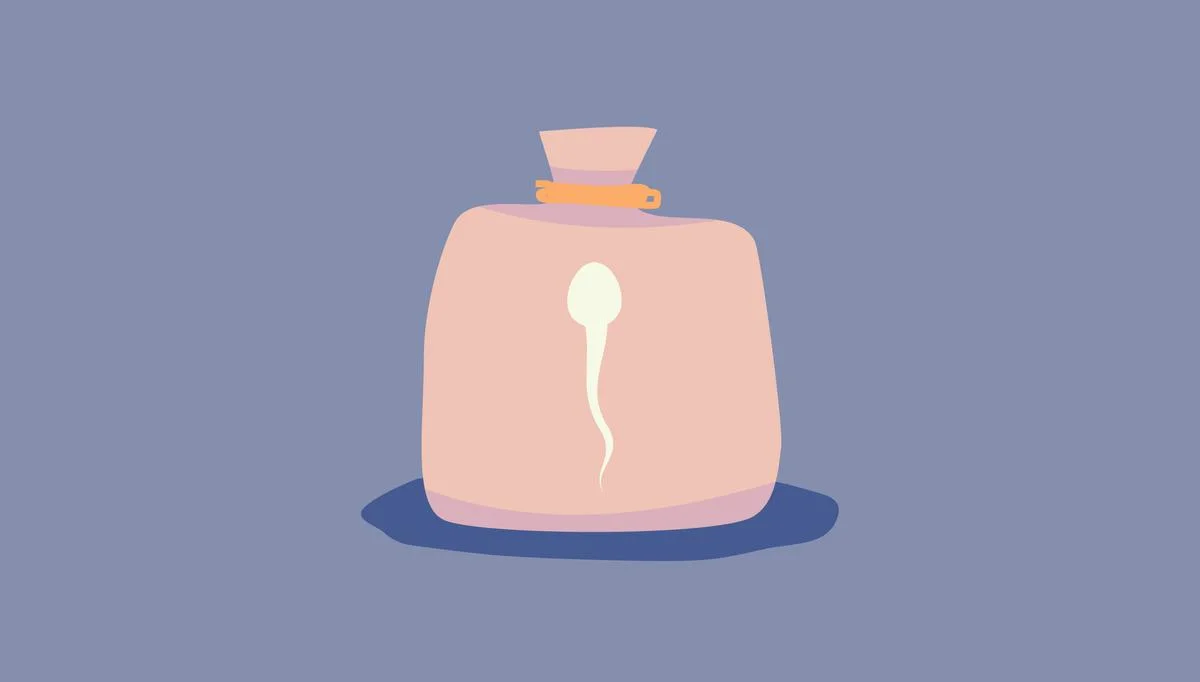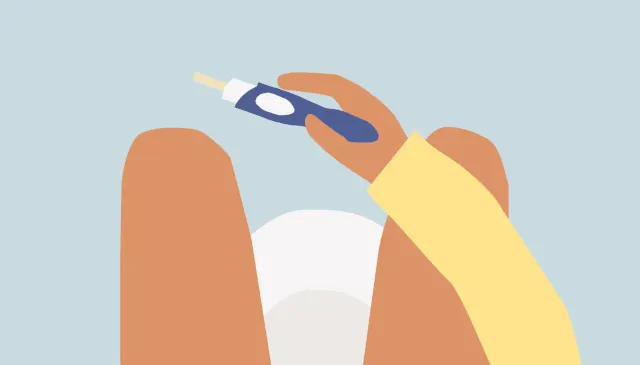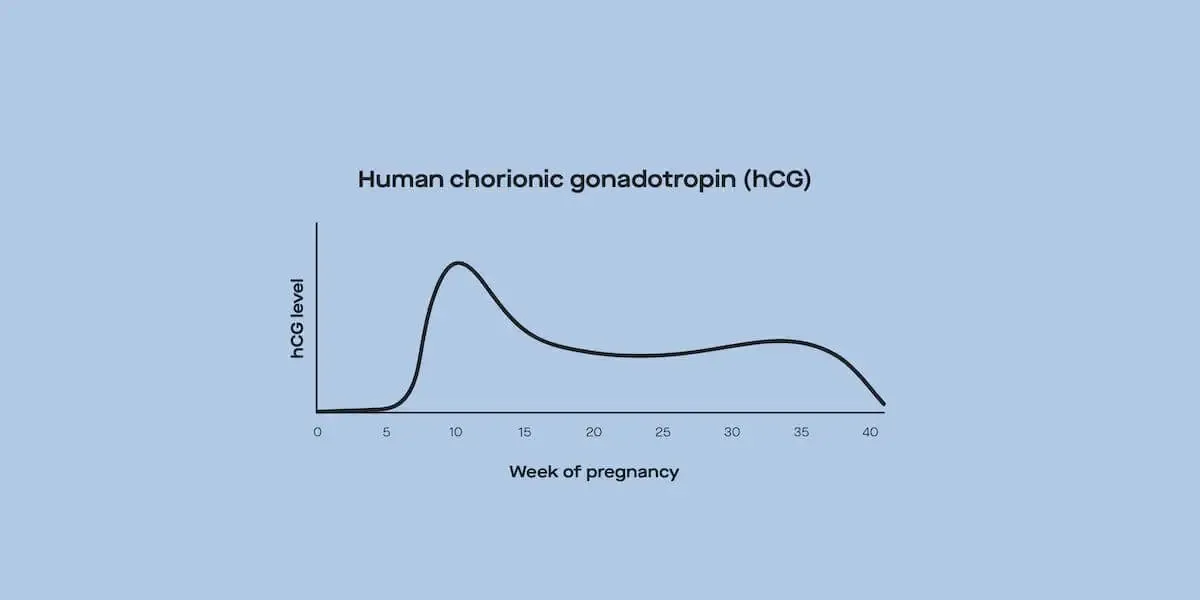Here's what we'll cover
Here's what we'll cover
In the world of fertility and reproductive health, you may find yourself trying to make sense of an entirely new vocabulary of terms — as well as a fresh list of acronyms.
You’ll come across some of these acronyms at the doctor’s office (e.g., medical terms around fertility treatment, like IVF), you’ll find some in articles you read, and you'll see others exclusively in online communities like the Modern Community (e.g., BFP and other shorthand for pregnancy testing).
Wherever you hear these terms, this shared language can make intimate conversations about fertility and reproductive health a little bit easier to have. Here, we’re defining some of these commonly used acronyms you may encounter while accessing reproductive healthcare — whether you're preventing pregnancy or trying to conceive.
General reproductive health
AMH: AMH, or anti-Mullerian hormone, is one of the most important hormones related to fertility. It serves as a proxy for ovarian reserve — aka how many eggs you have. And while it won’t tell you whether or not you’re fertile, it can give you a deeper understanding of things like menopause timing, egg freezing or in-vitro fertilization (IVF) outcomes, and polycystic ovary syndrome (PCOS).
OB-GYN: An OB-GYN is an obstetrician-gynecologist. This is a doctor who will care for you throughout your entire reproductive lifespan: from puberty to menopause. OB-GYNs can have a wide scope of practice. Some focus on obstetrics (managing your pregnancy and delivering infants), some focus on gynecology (helping with contraception, initial fertility testing, period health, cervical/uterine/breast cancer prevention, menopause, and performing surgery related to the reproductive organs), and some do both OB and GYN.
DOR: DOR, or diminished ovarian reserve, is a clinical diagnosis that means a person has fewer eggs than expected for their age.
E2: E2, or estradiol, is one of three types of estrogen (the “female” sex hormone) produced by the ovaries to help your body prepare for egg fertilization. When you near ovulation, your ovary triggers a dominant follicle within to release its egg. Throughout this maturation process, your follicle produces E2.
FSH: FSH, or follicle-stimulating hormone, has a very important role in your reproductive system — specifically in how your body produces eggs. This hormone helps follicles grow and mature in your ovaries so that one of those follicles will release an egg during ovulation.
PCOS: PCOS, or polycystic ovary syndrome, is a very common hormonal disorder marked by high levels of androgens (“male” sex hormones), multiple immature follicles in the ovaries, and irregular ovulation. Unfortunately, the spectrum of symptoms with this disorder often lead to a delay in diagnosis and treatment for many people. In addition to preventing regular monthly ovulation and making periods irregular, PCOS can sometimes cause male pattern hair growth, weight gain, and acne. It also predisposes people to other health conditions like diabetes, heart disease, and uterine cancer, if left undiagnosed and untreated.
POI: POI, or primary ovarian insufficiency, is what happens if the ovaries stop functioning normally before 40 years old. If you have POI, then you may have irregular periods before eventually experiencing menopause symptoms at a younger age. Some POI symptoms can be treated by hormone replacement therapy (or another acronym, HRT), but the underlying condition is permanent.
TSH: TSH, or thyroid-stimulating hormone, is the hormonal message the pituitary gland in your brain releases to monitor thyroid hormone production (T3, T4) and to keep thyroid function in check. Too high or too low TSH often indicates a hormonal imbalance which could make getting pregnant difficult if left untreated. Doctors recommend a TSH level of 2.5 before trying to conceive.
Preventing pregnancy
COC: COC, or combined oral contraceptives, are birth control pills that contain synthetic estrogen and progestin.
D&C: D&C, or dilation and curettage, is a surgical procedure where a doctor removes tissue from the uterus. D&C may be performed if there's abnormal vaginal bleeding, the body didn't expel all of the placenta after giving birth, or after a miscarriage or abortion. D&C used to be the method of choice for abortion, but today the same term is sometimes used instead for vacuum aspiration (a method of abortion offered up to 14 weeks of pregnancy).
D&E: D&E, or dilation and evacuation, is the medically preferred approach to abortion after 14 weeks. In D&E, after the cervix is dilated, the provider uses a suction device and other medical instruments to remove the pregnancy and any remaining tissue. There are no incisions on the cervix or uterus.
ECP: ECP, or emergency contraception pills, are a safe and effective form of emergency contraception containing either the progestin levonorgestrel (Plan B and others) or the progestin blocker ulipristal acetate (ella) to prevent pregnancy after unprotected penis-in-vagina sex.
IUD: IUD, or intrauterine device, is a very effective form of long-term and reversible birth control (sometimes called LARCs) that is also used for non-contraceptive reasons like heavy or painful periods. A doctor inserts the T-shaped device into your uterus, which, if you’re using it for contraceptive reasons, then prevents sperm from fertilizing an egg. If you’re using it for non-contraceptive reasons, the IUD helps to thin the uterine lining to make periods shorter, lighter, and less painful. Depending on whether you get a hormonal or non-hormonal IUD, they can be effective for 3-12 years. You can get pregnant as soon as an IUD is removed (i.e., it will not affect your fertility long term).
M&M: M&M, or mifepristone and misoprostol, are the two safe and effective medications used in medication abortion. Mifepristone works by blocking the activity of progesterone (which rises during early pregnancy) to stop the pregnancy from growing. Misoprostol works by inducing cramping to open the cervix and empty the uterus.
OCP: OCP, or oral contraceptive pills, are another way to refer to birth control pills.
POP: POP, or progestin-only pills, are oral contraceptive pills that only contain progestin (aka no estrogen). POP are often referred to as minipills.
Trying to conceive
2WW/TWW: 2WW or TWW stands for “two-week wait.” After timed intercourse or a fertility treatment (like intrauterine insemination), doctors recommend that you wait two weeks after you ovulate — then take a pregnancy test. This two-week wait corresponds to the time needed for an embryo to implant into the uterus and begin triggering a rise in the hormone (hCG) detected in blood or urine pregnancy tests.
ART: ART, or assisted reproductive technology, is the umbrella term used to describe fertility treatments that help sperm make its way to fertilize an egg. This includes intrauterine insemination (IUI), IVF, intracytoplasmic sperm injection (ICSI), and various fertility medications (like ovulation-inducing meds).
BBT: BBT, or your basal body temperature, rises after ovulation — monitoring BBT across your cycle can tell you once ovulation has already happened. That being said, body temperature is affected by a whole host of factors, making body temperature alone not a super accurate marker of cycle phase.
BFP/BFN: BFP stands for “big fat positive” and BFN stands for “big fat negative.” In the fertility community, especially in fertility groups across the internet, people use BFP and BFN to describe the positive or negative results of their at-home pregnancy tests.
CM: CM, or cervical mucus, is a fluid-like substance that your cervix produces to help sperm more easily travel through your cervix and into your uterus. You typically produce different types of cervical mucus based on where you’re at in your cycle, and during your most fertile stage, its consistency is comparable to raw egg whites.
DPO: DPO stands for “days past ovulation.” You’ll see or hear this acronym in conversations about pregnancy and fertility treatments. People often describe the symptoms they experience during their first 15 days past ovulation, or DPO, which is when, if you have conceived, an embryo is starting to develop/attach to your uterus.
hCG: HCG, or human chorionic gonadotropin, is often referred to as “the pregnancy hormone.” Since this hormone occurs naturally during pregnancy, it’s what pregnancy tests look for to detect early pregnancy. HCG can also be used in medical treatments for people struggling with fertility: You can receive hCG injections from your doctor to help you ovulate.
ICSI: ICSI, or intracytoplasmic sperm injection, is a procedure that often accompanies IVF and is meant to overcome issues with male factor infertility. In the lab, a doctor will inject just one sperm directly into an egg collected during an egg retrieval procedure as a direct route to embryo creation. This can be helpful for people with low quantity or quality sperm.
IUI: IUI, or intrauterine insemination, is a fertility treatment to help sperm reach an egg immediately post-ovulation. A doctor inserts sperm — either from your partner or a donor — directly into your uterus using a tiny sterile catheter. IUI tries to increase the number of sperm that make it through your cervix and into direct contact with the fertilized egg.
IVF: IVF, or in-vitro fertilization, is a fertility treatment where your doctor recreates the steps of fertilization outside of your body. Using your retrieved eggs or the eggs of a donor, a doctor will fertilize them with sperm to develop one or more embryos, which they will then transfer back into the uterus.
LH: LH, or luteinizing hormone, gets your body ready for a potential pregnancy and can help you track ovulation. Your body’s LH rapidly increases 24-48 before you ovulate — this is called an LH surge — which signals to your maturing follicle that it can now release an egg in hopes of being fertilized.
OPK: OPK, or ovulation predictor kit, is another name for ovulation test strips. After urinating on a strip (or dipping it into urine), the OPK measures your body’s hormone levels, specifically LH and sometimes E2, to predict ovulation. If you’re trying to conceive, you can use an OPK to time sex or IUI around your fertile window.
REI or RE: REI or RE stands for reproductive endocrinology and infertility (the specialty) or reproductive endocrinologist (the doctor), wherein specialty ART care (IVF, IUI, fertility preservation) occurs, or where complex reproductive endocrine conditions can be evaluated (fertility preservation prior to starting chemotherapy, for example). Depending on your age, your primary healthcare provider may recommend REI care after 6 or 12 months of TTC.
TTC: TTC stands for “trying to conceive.” In the fertility community and among fertility doctors, this is the shorthand way of saying that you’re actively trying to get pregnant — either through timed intercourse or fertility treatments — but you’re not pregnant yet.
Whether you’re TTC or simply want to learn more about conditions like PCOS, the Modern Community is an online space for real-talk support from people on the same wavelength fertility-wise. (Plus, it’s also a great place to see fertility vocab in action from experts and community members alike.)
DISCLAIMER
If you have any medical questions or concerns, please talk to your healthcare provider. The articles on Health Guide are underpinned by peer-reviewed research and information drawn from medical societies and governmental agencies. However, they are not a substitute for professional medical advice, diagnosis, or treatment.










